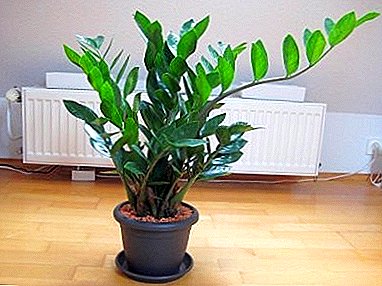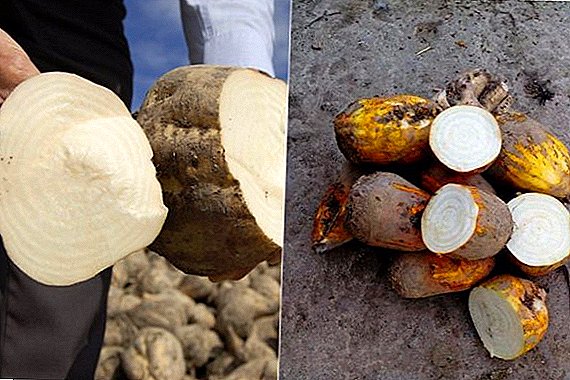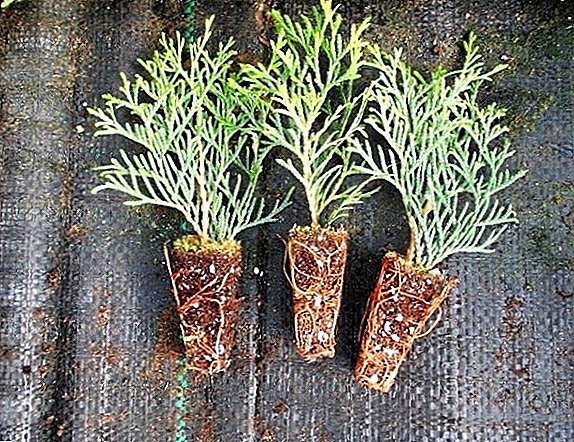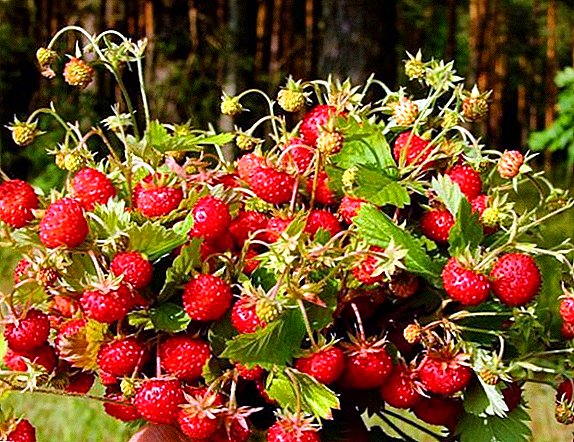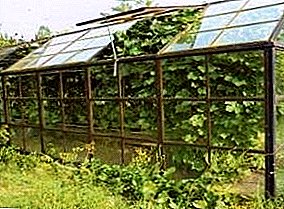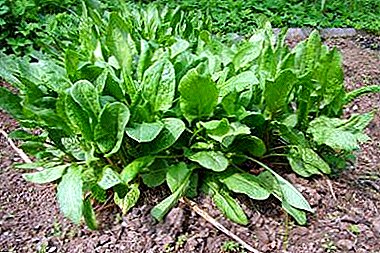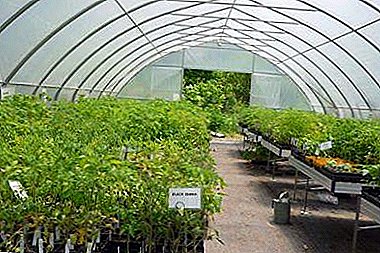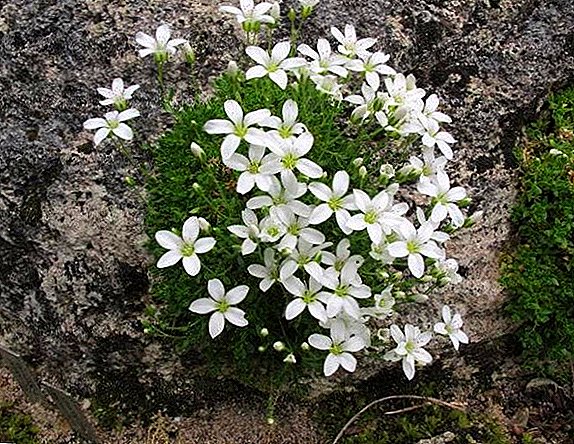 The owners of private plots often have a problem - how to hide the edges of the sidewalks, places near the fence, so that the plants are not affected. At the same time I want to preserve the integrity of the composition and avoid poor color compatibility. In this case, a small flower called a gerbil or arenaria can help, which you can learn more about.
The owners of private plots often have a problem - how to hide the edges of the sidewalks, places near the fence, so that the plants are not affected. At the same time I want to preserve the integrity of the composition and avoid poor color compatibility. In this case, a small flower called a gerbil or arenaria can help, which you can learn more about.
Botanical description
Peschanka or Arenaria (Arenaria - in translation from Latin "sandy") is a grass of the family of Cloves, which can be one-year, two-year or long-term. The gerbil reaches a height of 3 to 30 cm, depending on the species, twisted shoots, creeping shoots on the ground surface are absent.
The length of the leaves is from 2.5 mm to 1.5 cm, their shape may resemble a lancet, oval or ellipse. Arenaria blooms from late April to June with small flowers, most often white, sometimes pale pink or pale purple in color, abundant blooms.
Flowers consist of 5 petals, under which grow 5 sepals about 0.5 cm in size, are located on the top of the stems, they are of both sexes. In the middle grow about 10 stamens and 3 pistils. At the end of flowering the fruit is formed in the form of a box with teeth on the ends, in the middle of which there are seeds about 0.5 mm in size, not fleshy. 
Distribution and habitat
Arenaria grows in places with a cold or moderately warm climate, more often in northern latitudes, less often - high in the mountains in a tropical climate. It can be found in the Balearic Islands, Corsica, in the mountains of France, Portugal, Spain, in the Pyrenees, in Eastern Siberia, Central and Southeast Asia.
Popular gerbil species
Over 270 plant species are known, the most common of them are:
- Mountain Peschanka (Arenaria montana) - height up to 15 cm, width up to 50 cm, leaves up to 2 cm long in the form of a lancet, peduncle up to 20 cm, white flowers about 2.5 cm in size. Can tolerate lowering the temperature to -35 ° C, common in the mountains of Portugal, France , Spain, needs calcium fertilizer.
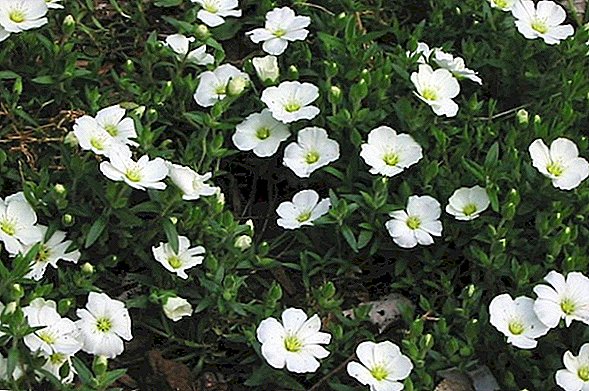
- Balearian sandpit (Arenaria balearica) - got its name from the place of growth - the Balearic Islands, Corsica. Plant height reaches 3 cm, width - 50 cm, leaves - 3 mm, white flowers - 1 cm, peduncles - 4 cm, the view resembles moss. It prefers wet rocky terrain, where direct sunlight does not fall, is frost-resistant.
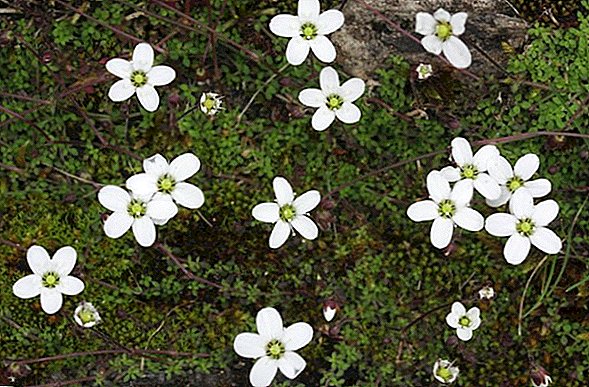
- Gerbil purple or scarlet (Arenaria purpurascens) - Its peculiarity are flowers of pink-purple color 1 cm in size, which appear in the middle of summer. Leaves of this size grow on stems 10 cm high. The plant grows to a width of 20 cm in width. It grows in the Pyrenees.
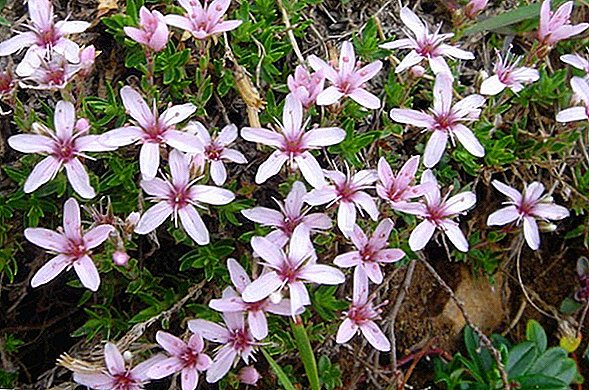
- Gerbil flower (Arenaria grandiflora) - It looks like a mountain, but the flowers are larger.
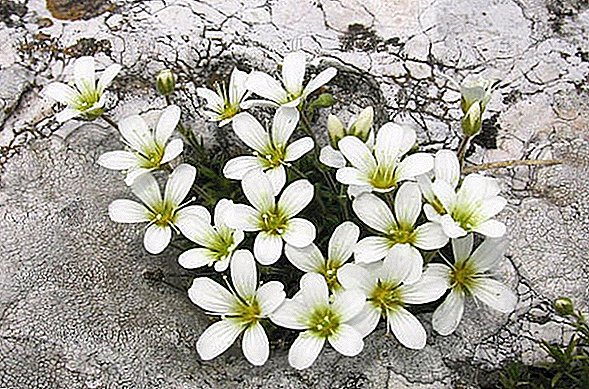
- Sandpit tetrahedral (Arenaria tetraquetra) - grows in the Spanish Pyrenees at an altitude of about 2 km. On the stems up to 3 cm are green leaves, collected in rosettes and located crosswise in several rows under each other. In late spring, several white flowers appear at the top. Thanks to the spectacular view, any rock garden can decorate even when flowering ends.
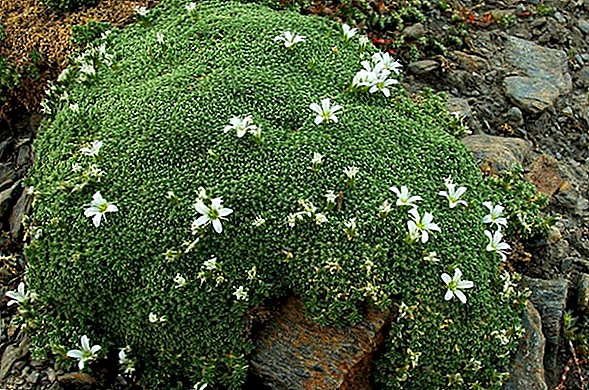
- Sandstone bokotsvetnaya (Arenaria lateriflora) - The plant grows up to 40 cm, blooms in late spring with white flowers of 5 mm in size, located on the tops of the stems in several pieces on long stalks. The leaves are green, narrow, in length reach 5 cm.
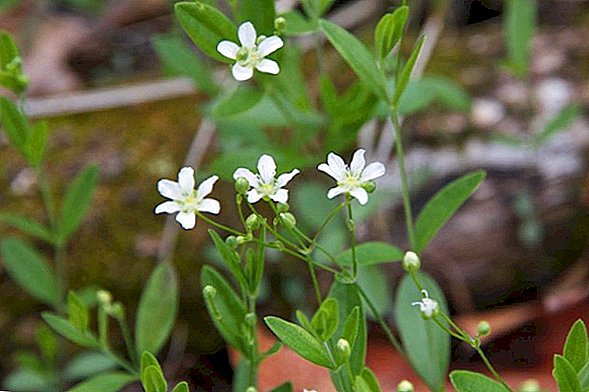
- Thyme or thyme leaf (Arenaria serpyllifólia) - grows in temperate climates of European and West Asian countries, as well as in North America. An erect stem up to 15 cm in height (less often up to 30 cm) is covered with stiff bristles and forks in the upper part. The leaves are egg-shaped.
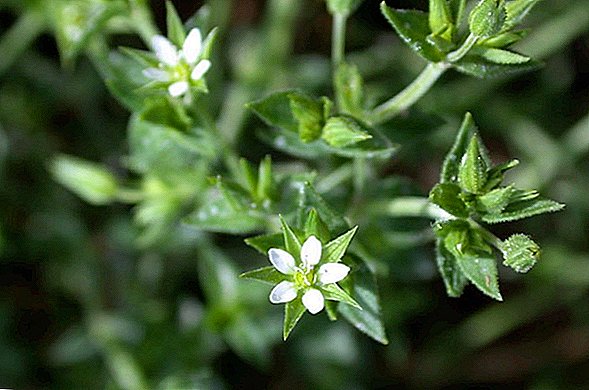
Did you know? To pick a moss-like gerbil flower (Arenaria musciformis), you need to climb to a height of 6,218 m above sea level.
- Graceful gerbil (Arenaria gracilis) - this species is characterized by small growth of stems, small leaves and relatively large white flowers. Plant dense carpet covers the ground.

- Sandpit round leaf (Arenaria rotundifolia) - tall stems, green leaves, round in shape, flowers are not large, white.
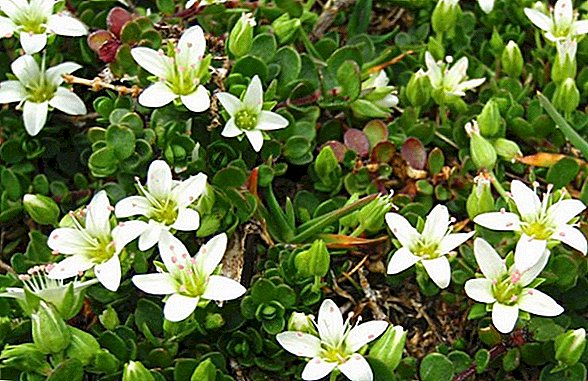
- Peschanka two-leaved (Arenaria biflora) - The stems are intertwined, the leaves are small, lanceolate, arranged in pairs opposite each other. Bloom in white flowers, the center is yellow.

Use in landscape design
Arenaria is widely used in landscape design, due to its ability to thickly cover the soil and thus hide unsightly places. It is hard to trample it, so it will have to place in the intervals between the slabs, along the edges of the sidewalks.
Your garden will also be beautifully decorated with such herbaceous plants as cypress euphorbia, carnation pinnate, volovik, gelipterum, imperator cylindrical, levkokorina, veronikustum, canary, bidens, bookfoot, yasnotka, penstemon and alpine aster.
The plant is planted in rock gardens, rockeries, on terraces, near the borders, fences, on the slopes, species with large flowers can be planted with islands. Gerbil looks good in pots.
Good plant compatibility with:
- lithophytes;

- gentian;
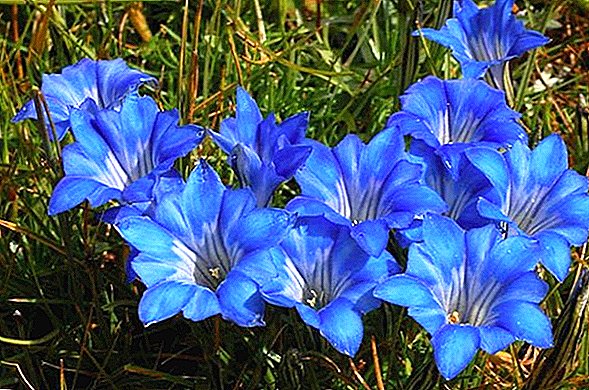
- alpine flaxseed;
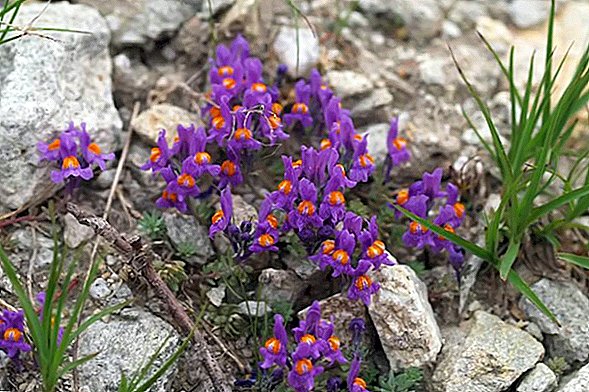
- saxifrage;
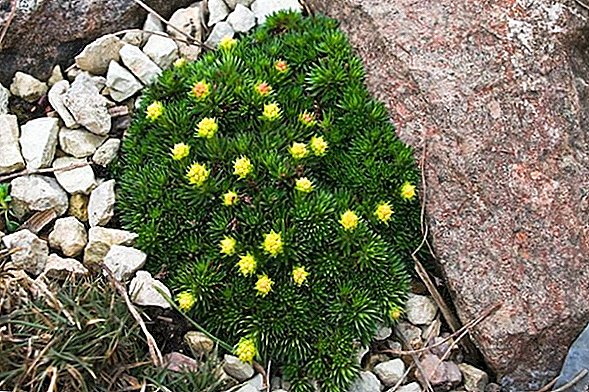
- zhivuchkoy;
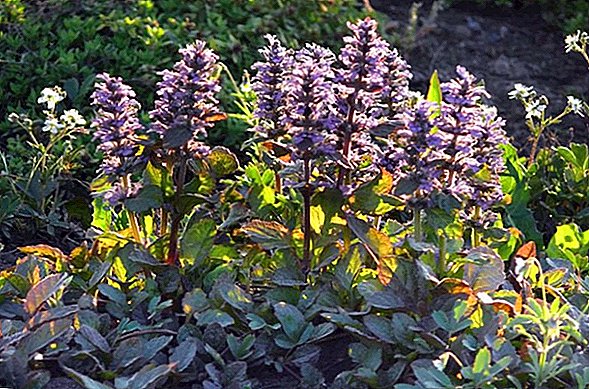
- the army;

- juniper;
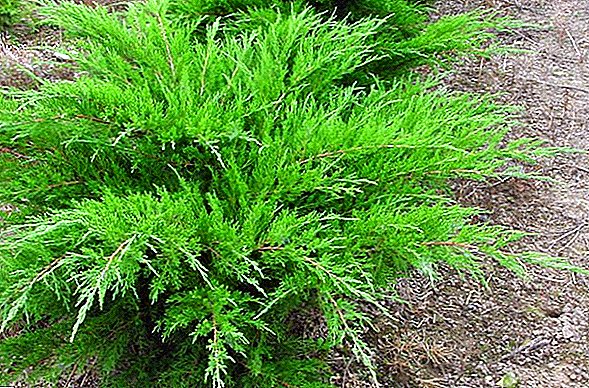
- bells;

- periwinkle.
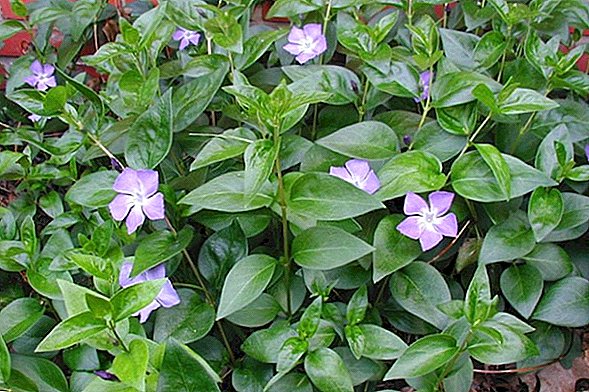
Growing and caring for gerbil
The arenarium is undemanding to the conditions of detention, but some subtleties are present in the care.
Conditions of detention
Gerbil gerbil is better in places with a large number of stones or rubble, on the slopes. Many species are well tolerated by the abundance of sunlight, but some (for example, purple and Balearic) prefer shade.
For planting at home, you need to choose shallow pots of suitable diameter, so that there is an opportunity to grow. To light, the plant is not demanding, it can grow on the windowsill, balcony, wall. After flowering, the plant must be cleaned of wilted flowers, you can cut the stems slightly to improve the shape. 
Soil and fertilizer
The gerbil soil can be both acidic and alkaline, but the latter is preferable. Arenaria grows well on sandy bottom. It is enriched with humus, drainage is laid out at the bottom of the pot - shells, tuff, small stones, travertine, coarse sand.
We recommend reading about what types of soil exist, how to improve soil fertility, how to independently determine the acidity of the soil at the site, and also how to deoxidize the soil.
Fertilize the soil twice a year, and transplant once a year. In the open field transplanting can not hold up to 5 years. It is necessary to monitor the emergence of weeds and weed them regularly, otherwise the plant will die.
Watering and moisture
Watering is carried out several times a week, preventing full drying of the soil. At the same time it is impossible to allow increased humidity so that it does not rot. In winter, the plant is watered less often with less water. It is sometimes recommended to spray. 
Relation to temperature
Since the gerbil's peculiarity is that it grows in nature in northern latitudes, it also tolerates low temperatures in home breeding conditions.
Important! The plant can be left to hibernate in the open field and not be afraid of freezing. He is not afraid of sudden temperature changes in the form of spring frosts.
Flower reproduction
You can propagate the arenarium:
- seeds;
- grafting;
- division of the bush.

Seeds
There are 2 possible periods for planting plant seeds:
- The end of November - the middle of January. The peculiarity of this method is that seeds are planted in the prepared soil to a depth of about 5 mm and left in this condition in a warm room (+ 20 ° C) for 2 weeks, without covering. Then the pot is wrapped with a film of polyethylene and taken out on the street or placed in a refrigerator until the beginning of spring (the temperature should be maintained at a level not lower than + 3 ° C and not higher than + 5 ° C). Then the pot is brought home and left to germinate.
- The end of January. The seeds of the plant are placed in the ground, the container is wrapped in a film, transferred to a cold place for 6-7 weeks, after which it is allowed to germinate in a warm room.

Vegetative
Vegetative method includes propagation by cuttings and dividing the bush. The first of these is rarely used, since the gerbil has very thin and small shoots. To do this, cut the cuttings and immerse them in a container with water until the roots, and then transplanted.
Important! Reproduction by dividing the bush can not be carried out during the flowering period.
Proceeding from this, in early spring or at the end of summer the ground is watered around the plant, the bush is carefully dug out, prying with a shovel and taking care not to damage the roots. Gerbil divided into parts and planted each part separately. In order not to damage the rest of the plant, cuttings are cut after flowering ends in July or August. 
Possible difficulties in growing
In the process of growing gerbil can be faced with such difficulties:
- Long seeds do not germinate - you need to wait, the germination of seeds occurs in the plant slowly.
- Slowly growing shoots - this is also a characteristic problem.
- Due to their short stature, they can be taken as a weed and weeded.
- If annual plants are planted next to the arena, it can take their place the next year.
- If weed is not weeded, the gerbil will no longer fully grow.
- May die from excessive watering.
Pests, diseases and prevention
Arenaria can be subject to such diseases:
- Rust - tubercles of red color on green parts of plants, filled with red powder.
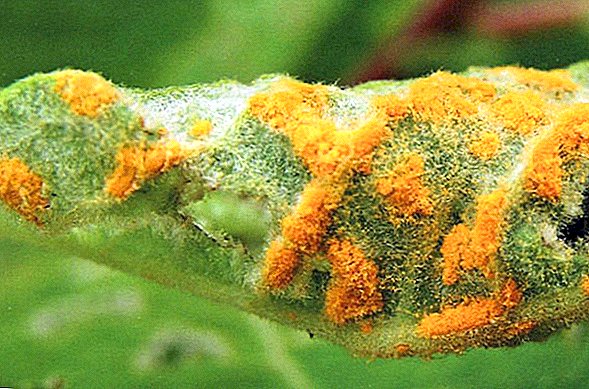 Bordeaux liquid, colloidal sulfur is used for the fight. To prevent infection, a green hedge is planted along the edges of the territory - shrubs with a thick crown.
Bordeaux liquid, colloidal sulfur is used for the fight. To prevent infection, a green hedge is planted along the edges of the territory - shrubs with a thick crown.Learn more about how to get rid of rust on plants.
- Blackleg - a fungus that infects plants, a symptom of which is the dark color of the stem at the bottom of the plant. For the prevention of soil before planting treated with potassium permanganate, subjected to high temperatures, low acidity of lime. You also need to comply with the measure when watering, avoiding both excesses and droughts. The plant is weakened by stagnant air in the room and large thickening.
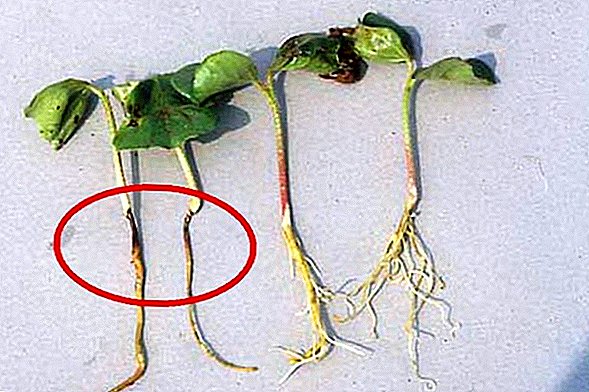
- Plant virus infection - for humans, these viruses are not dangerous, they are carried by insects. Those plants that have the resistance gene survive.
Did you know? In 1 teaspoon of sea water there are about 1 million viruses.
The spider mite is dangerous for plant pests, it appears as white spots and thin cobwebs. However, it does not tolerate low temperatures and spraying ordinary water.
It will be useful for you to familiarize yourself with the description of various types of spider mites, as well as to learn how to deal with them.
A gerbil can not only profitably hide unsightly places in landscape design, but it will also look good in the composition. This is not a capricious plant, it can be grown at home. A great advantage is the ability to tolerate cold. However, comply with the requirements for moderate watering, and gently weed weeds.





















 Bordeaux liquid, colloidal sulfur is used for the fight. To prevent infection, a green hedge is planted along the edges of the territory - shrubs with a thick crown.
Bordeaux liquid, colloidal sulfur is used for the fight. To prevent infection, a green hedge is planted along the edges of the territory - shrubs with a thick crown.

